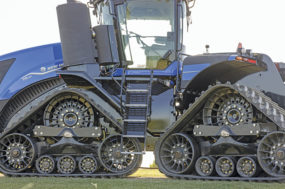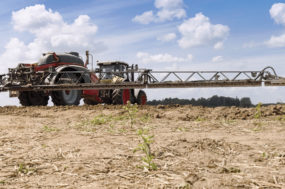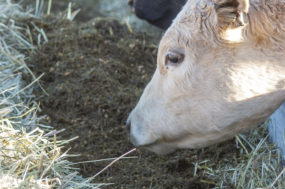In the mid-1800s, some pioneers too poor to buy wagons and teams migrated West by pulling handcarts piled high with tools, seeds, blankets, beans, flour and a little lard.
The yoke of the cart only accommodated two people, so other family members pushed from behind. Hence came the saying, “For some must push and some must pull.”
The saying could be just as aptly applied to Hugh Bennett during the Dust Bowl era. Hugh Bennett had to push farmers into pulling together.
On September 14, 1930, a dust storm kicked up in Kansas and rolled toward Oklahoma. Not just any dust storm – this one was odd. People called the government.
Hadn’t seen anything like it before. It transmitted enough static electricity to short out a car. It was mean. The black storm was a kick-off to an extended six-year drought.
In 1932, there were 14 dust storms. In 1933, there were 38. April 14, 1935 was later referred to as Black Sunday. After church that day, one storm lifted as much dirt into the air as had been dug out to create the Panama Canal – 300,000 tons. The canal took seven years to dig. The storm lasted one day.
It kept blowing until it blew through New York City and onto ocean-bound ships. But the storms weren’t through yet, hadn’t even peaked. In 1935, farms lost 850 million tons of dirt, and in 1937, 134 storms blew through the heart of farmland. If only it would rain, they said. But it didn’t.
Then along came Hugh Bennett, who said the drought itself wasn’t the problem, farmers had survived drought cycles before. Big Hugh blamed, in part, the Federal Homestead Act for having kept land allotments low with a 160-acre cap and requiring that a portion be plowed.
Hugh had a vision to restore the ravaged land. He pushed the government to start a Soil Erosion Service to treat several farms together as a single ecological unit, and he begged farmers to pull together and join the conservation districts. It was Big Hugh who pushed farmers to slow the drifts by contour plowing, and the farmers pulled together.
There’s a lot of pushing and pulling going on in Congress right now; problem is, it’s not in the same direction. I’ve read and listened to a lot of theory over the past two months, as have you, challenging whether the farm bill and immigration reform should be pulled apart and voted on incrementally or pushed through intact.
I’ve heard fair arguments for both. Whether the issue is settled by the date of this reading or not, it certainly won’t be the final debate. And the bigger question is: How do we pull a nation together?
I know what I’d like to do. I’d like to send Congress a handcart in a dust storm. I don’t know why we get so bogged down in the handcart details – how many spokes in the wheels, what wood grain for the box and whether an EIS was conducted on the wheel tracks first.
What really matters is that for the handcart to move toward the goal, we have to push and pull together, same direction, not separately and not in self-interest, which just stalls the handcart.
And I’m thinking we need to get the handcart moving because the dust storm is already rolling, and if we can’t figure this out before it hits then we’ve got bigger problems than the number of spokes in the wheel .
Don’t misunderstand; I’m not arrogant enough to offer easy answers for complex problems, and it’s easy to be critical from the cheap seats. I’d just like to encourage us all, as citizens, to work together and not separately.
Whether our handcart looks like a legislative committee, a church group, a working family farm or an industry association, we can move that handcart forward as long as some are willing to push and others to pull.











